How Do Lingual Braces Compare with Other Options?

Deciding to get braces is a an excellent decision that will not only improve your oral health and your smile, but your confidence as well. There are countless benefits to straightening your teeth. However, the first step is choosing a braces option that is right for you. Do you want the strongest braces you can get? Is there a bite problem that you need to correct? Do you want to hide your braces as much as possible? Your goals and lifestyle will determine what braces option is right for you. Learn how the popular lingual braces compare with other options!
Lingual Braces 101
Back in the day, there was only one option for straightening your teeth: metal braces. Many people have these bracket-and-wires option that is attached to the front of your teeth. In fact, it is still one of the most popular braces options today. This is partly because traditional metal braces are one of the only options that children can use to correct bite and alignment issues. However, over the years, it became more important to provide an orthodontic option that can still correct bite and alignment issues, but in adults. The main kicker was that many teens and adult shy away from braces because they don’t like the metal showing on their teeth.
That is why lingual braces were created. Using the same idea as traditional metal braces, you can achieve the same results as traditional braces, only with a hidden treatment apparatus on the tongue-side of your teeth. Patients that choose this option have impressions made of their mouth that focus on the backs of their teeth. After being sent to a special lab, metal backings for the teeth are made that are then bonded to the back of your teeth. These also have small metal brackets and wires that discreetly correct bite and alignment issues over time.
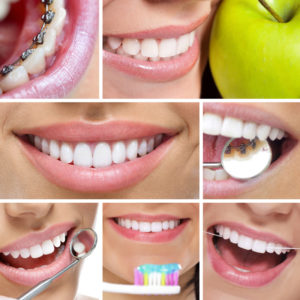
Traditional Braces Vs. Lingual Braces
There are not many differences between lingual braces except for the following:
- Lingual braces are custom-made specifically for a patient. Traditional braces are always the same brackets and wires that are used for all patients. Lingual braces have to be fit to a person’s individual teeth.
- The braces are hidden with the lingual option. Brackets, wires and all metal is attached to the back of the teeth instead of the front. You can go your entire treatment without anyone knowing you have braces.
- This option is ideal for musicians. Brackets and wires on the front of the teeth can interfere with wind instruments in some people. When the brackets and wires are on the tongue-side of the teeth, you don’t get those problems.
- Athletes also benefit because there are no brackets or wires that can shred the cheeks if an injury happens in contact sports.
- You straighten your teeth while keeping your smile bright and beautiful with lingual braces.
We love traditional metal braces, lingual braces and all our other orthodontic options. It generally comes down to aesthetics with most patients, and that’s where lingual braces has traditional metal ones beat. The comparison between ceramic braces and lingual braces is almost exactly the same, as ceramic braces are modeled after traditional metal braces. The only difference is that they are made of white ceramic material instead of metal material.
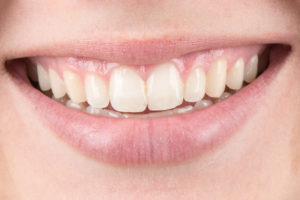
Why Lingual Braces Over Invisalign?
There are many patients that wonder why they shouldn’t simply get Invisalign. These transparent aligners are offered at our office, and they do excellent work to straighten the teeth. We actually recommend these to many teens and adults. However, they do have their limitations, which is why we recommend lingual braces over Invisalign in some cases. Invisalign treatment works to straighten a patient’s mouth in secret. Lingual braces seek to achieve this same incredible benefit. However, only lingual braces can correct bite and alignment problems that are severe.
The metal-and-bracket design makes them incredibly sturdy for drawing a bite in if a person has overbite. It can also do the opposite and correct underbite and other other type of bite problem. However, Invisalign aligners have a much harder time with that because they don’t have brackets and wires. Both options are great if a patient simply wants to straighten their teeth. Both options are also very hidden in the mouth, making them appealing to teens and especially adults. However, when bite problems exist, you want to kill two birds with one stone by straightening and correcting bite. If this is you, then opt for lingual braces instead of Invisalign.
Choosing Your Braces
We take choosing specific braces on a case-by-case basis. There are four amazing braces options available for patients to choose from, and each were designed to target different things that patients need. Patients want the sturdiness of metal braces, but don’t always want them visible. That is why lingual braces are a great hybrid of the other types of braces we offer. You get the functionality and strength of metal, but the hidden feature like Invisalign provides. We want every patient to be sure about their braces option before they have their orthodontic appliance made. To find out which option will suit you best, call Belmar Orthodontics today at (303) 225-9016!
What are the Benefits of Lingual Braces?
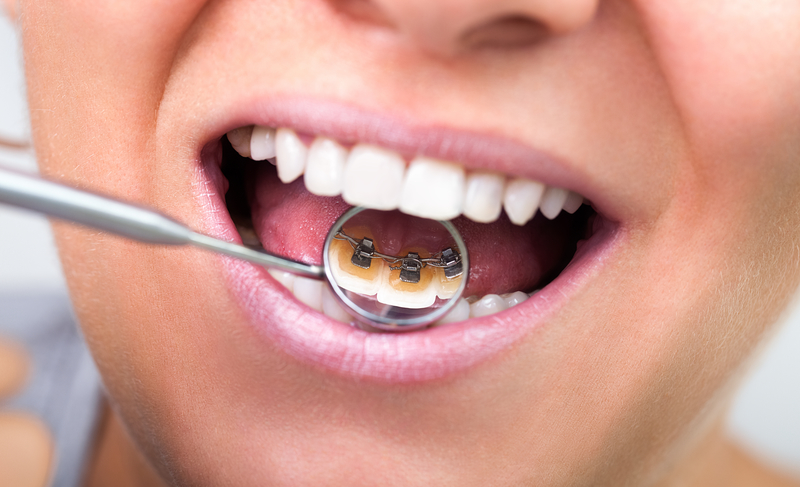
Many patients are getting excited about lingual braces as an option for their orthodontic care. These types of braces can correct long-term or lifetime dental issues. They are also hidden in a patient’s mouth and because they’re not on the front of the teeth, they are a perfect option for athletes or musicians to perform better. Thinking about leveraging the power of lingual braces to straighten your smile? Consider the benefits that lingual braces can offer you and ask about your set today!
What’s the Difference Compared to Other Options?
Lingual braces is an exciting option for patients who want to combine the benefits of Invisalign transparent aligners with the sturdiness of traditional metal braces. These type of braces are also known as “incognito hidden braces” because they rest behind your teeth instead of on the front. They too, are made from metal, except this metal is usually gold instead of silver. Plus, instead of simple brackets and wires, the metal attachments cover the entire back of your tooth surface.
There are brackets and wires, but they are on the tongue-side of your teeth. Lingual braces are amazing because they can achieve the same results as traditional orthodontics in a manner that is inconspicuous and undetectable. They are tightened at each appointment just like traditional braces and can correct bite and alignment issues with ease. How do you benefit from these type of braces?
- Correction of long-term or lifetime dental issues
- Less noticeable orthodontic treatment
- Good orthodontic treatment for athletes and musicians who play wind instruments
- Increased confidence during treatment compared to traditional methods
- Elevated self-esteem after treatment
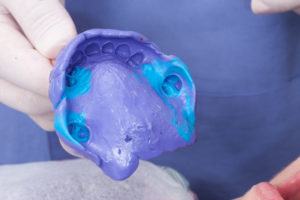
Difference Between Lingual and Traditional Braces
Not all metal braces are alike. Even though lingual braces are made out of metal alloys, they are still different than traditional metal braces. Metal braces rest front and center on a patient’s teeth. They consist of the classic brackets-and-wires set-up, but they can make your smile look gray because of the metal. Depending on your oral health, you can have tooth staining and dental erosion during your time with braces. This can leave marks when the braces come off.
Compared to traditional braces, lingual braces are more ideal for athletes and musicians. Traditional braces can make it difficult for musicians to play wind instruments and can affect how a person blows. For athletes, they have to worry about dental emergencies caused by metal brackets and wires if they get hit in the mouth. There are no brackets or wires on the front of the teeth that will cut up the cheeks if a person gets hit in the face. However, both of these styles of braces are extremely effective at correcting bite and alignment issues.
Comparing Lingual Braces to Ceramic Braces
Ceramic braces are very similar in their style to metal braces. The only difference is that they are made from white, ceramic material instead of metal. Even the wires can be made white to match the teeth. This is a more aesthetic option for teens who like metal braces but don’t want them as noticeable. However, they are still much more noticeable than hidden braces would be. A teen or adult simply has to decide how noticeable they want their braces.
Invisalign Vs. Lingual Braces
If patients want hidden braces, then why not just use Invisalign treatment? This is a great orthodontic option, but it has its limitations. Yes, Invisalign is transparent on the teeth. However, those aligners cannot correct many bite and alignment issues, which many patients need. They are more ideal for patients who only need their smile a bit straighter. For any major orthodontic issue and especially bite problems, Invisalign is not the best option. Lingual braces combine the hidden aspect of Invisalign treatment, but with the sturdy structure of metal braces that can correct bite problems.
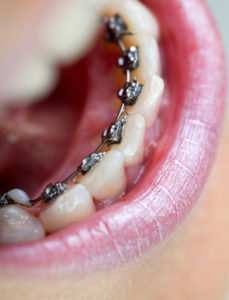
Choose Orthodontic Care
No matter what orthodontic option you choose, simply opting to receive orthodontic care for bite and alignment issues will improve your oral health immensely. Some people skip receiving orthodontic care because they believe they will save all that money. However, crooked teeth and bite issues can actually cost more money in the long run. How you ask? When your teeth are straight, they are very simple to clean with a toothbrush and quick to floss. However, when they are crooked, you will consistently miss many parts of your tooth surfaces. This can lead to quick decay, which will take dental work for every instance of tooth decay.
Flossing also gets very difficult when the teeth are crowded or crooked. A patient may not even be able to pass floss between the teeth if they are too crooked. That’s detrimental to a patient’s health, as 40% of tooth surfaces can only be reached through flossing. That leaves those tooth surfaces open to decay, enamel erosion, staining and infection. If this happens all over your mouth, you’re looking at spending a lot of money over a lifetime to fix all your oral health problems.
Get Your Braces
Opting to receive orthodontic care saves you the headache of bite and alignment issues, crooked teeth, and decay and gum disease that can happen. Correct these issues early-on and enjoy your smile for life. Call Belmar Orthodontics today at (303) 225-9016 to learn about lingual braces and your other orthodontic options!
What Is an Orthodontist?

If you want to be an orthodontist, you have at least 10-12 years of schooling ahead of you. Orthodontists are very similar to dentists, but they perform completely different tasks in an office than a dentist would do. This is why you need to see both an orthodontist and a dentist if you have braces. See what services they provide that no one else can!
Want to Become an Orthodontist?
To become an orthodontist, a person has to commit to at least 10-12 years of education, training, fellowships and more. Even after that time, and orthodontist must continue testing and studying throughout the years in order to do orthodontics. An orthodontist is a professional that specializes in correcting crooked smiles, bite and alignment issues, jaw problems and aesthetics of the mouth.
They do this through braces, which commonly consist of metal bracket and wire appliances. Those appliances mold the teeth and jaws into specific alignments and positions. Through focused pressure with these mouth appliances, a person with major bite, alignment, or crooked teeth problems can find themselves with a beautiful, functional smile. This is especially beneficial for patients who have oral health problems that cause them speech impediments and difficulty biting, chewing, speaking and functioning normally.
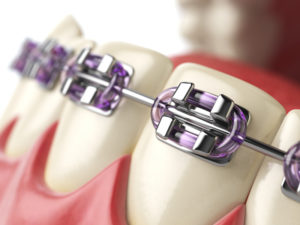
What Does An Orthodontist Do?
An orthodontist is a step above a dentist when it comes to their schooling. To become an orthodontist, a person must complete 4 years of undergraduate schooling at a university. They then apply for dental school and must be accepted. After 4 years of dental school, many students become dentists. However, orthodontists must continue to do at least 2 more years of orthodontic school and fellowships to do orthodontia as a profession.
Even though orthodontists are trained in dentistry, they do different work than dentists. They provide services such as correcting misaligned teeth and smiles, overbite, underbite, crossbite, and other alignment issues. Some are trained to provide surgical orthodontic procedures, or they work closely with an oral surgeon in correcting a misaligned jaw.
For patients who receive surgical orthodontics, an orthodontist will provide pre-surgical orthodontic care to align teeth and jaws as much as possible. A patient will then have oral surgery done to correct issues that can’t be done without surgery. Then, the jaws and teeth are aligned to their final, complete position through orthodontic appliances. If a patient doesn’t receive surgical orthodontics, they generally do 18-24 months of braces to straighten their teeth. Primarily, this is what an orthodontist does: they design braces (based on what type you pick) that fit your smile and that can shape it straight over the course of 1-2 years.
How It’s Different Than Dentistry
Both dentistry and orthodontics focus on oral health and improving a person’s smile. However, dentistry primarily strives to clean the teeth, fix tooth decay, perform root canals and treat gum disease. Patients also receive dental crowns, bridges and implants, and many cosmetic dentistry procedures. If you need teeth whitening or want to improve the look or health of your teeth, seek out a dentist. They can perform teeth whitening services, provide dental veneers and implants, and can help with oral health diseases.
However, if you need your teeth straight in the first place, you need an orthodontist. The American Dental Association recommends that every patient see a dentist at least twice a year to avoid major oral health diseases. You will need an orthodontist at various intervals in your life. However, you don’t see them as frequently throughout life like you would a dentist. When you have crooked teeth or problems with your jaws or alignment, you work with an orthodontist to fix the major issues. Then, a dentist fixes the more minor issues like the color of your teeth.
A dentist is not trained to straighten the teeth even if a dental office provides a transparent aligner service such as Invisalign. You always want to choose a trained orthodontist for properly straightening your teeth so oral issues don’t arise.
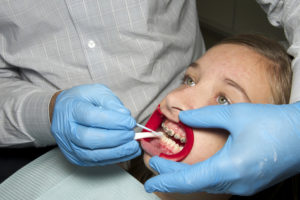
Do You Need Orthodontics?
When battling tooth decay, gum disease, bad breath and more, seek out a dentist. If you want to correct jaw, teeth, alignment, and bite issues, seek out an orthodontist. You may find yourself visiting both often if you receive braces as a child and then later as an adult or teen. Most orthodontists are trained to correct jaw and bite problems in children. You should always take your child in to see an orthodontist by age 7 if you already haven’t. The American Association of Orthodontics recommends this, as major bite and alignment issues of the jaws and teeth can be corrected easily when young. As a person grows older, the jaw hardens and becomes more permanently fixed, and oral health problems are much harder to correct.
If you are deciding to invest in braces, take a look at your teeth. Are they crooked? Do you find that either the upper or lower jaw overlaps the other significantly? Do you have problems speaking, eating, biting or chewing at times? You could benefit from orthodontics! Most people can significantly improve their oral health and their happiness (from having a beautiful smile) if they choose to see an orthodontist for help with their smile.
Dr. Hardy’s Office
Dr. Hardy is an award-winning orthodontist in Lakewood, CO. He is an active member of the American Dental Association and the American Association of Orthodontics. Dr. Hardy works with a team every day to make sure his patients young and old are cared for. At his center, he offers patients the option of getting ceramic, clear braces, traditional metal braces, lingual braces and Invisalign treatment. He can perform surgical orthodontics if needed and pediatric orthodontics. When choosing a center for your family, you want one that can treat patients of all ages and a center whose staff knows how to work really well with children. You can find that at Dr. Hardy’s Belmar Orthodontics office by calling (303) 225-9016!
Lingual Braces: Straighten Your Teeth Without Anyone Knowing!

Lingual braces can achieve the same effect as traditional orthodontics in a manner that is inconspicuous and undetectable. By discreetly attaching the braces to the back of the teeth instead of the front, Dr. T.C. Hardy can help you achieve straight, healthy and beautiful-looking teeth. Consider the benefits of lingual braces when you are deciding which orthodontic appliance you want!
How Do Lingual Braces Work?
No matter what braces option you are going to get, we always meet with patients to first have an orthodontic consultation. At this consultation, Dr. Hardy will examine your teeth, checking their straightness as well as your bite and alignment. The size of your teeth matter if you request to have lingual braces put on your teeth. Dr. Hardy will examine the backs of your teeth to determine if you are a candidate to receive them and if brackets and wires will comfortably fit on the tongue-side of your mouth.
Once Dr. Hardy has determined that you are an ideal candidate for lingual braces, he will take impressions of your teeth that are then sent to a lab for custom-made brackets and wires. At your next appointment, we will gently bond the metal to the back of your teeth with the attached brackets. We will then run a metal wire through the brackets. The process is quite similar to what is done with patients who choose traditional metal braces on the front of their teeth. However, instead of your cheeks adjusting to the feel of the brackets, your tongue will be the part adjusting to the new appliance. At each appointment, Dr. Hardy will examine your teeth and adjust the wires as needed to straighten your teeth properly.
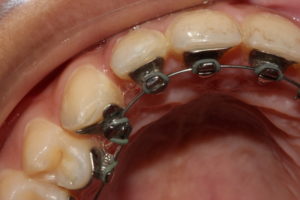
Facts About Lingual Braces
- You can achieve the same results as traditional braces, only with a hidden treatment apparatus on the tongue-side of your teeth.
- These braces have to be custom-made to the back of your teeth, because teeth size can vary from patient to patient.
- Children are not usually candidates for lingual braces. It all depends on their age and the size of their teeth. Baby teeth are small and with many patients, there is not room to fit brackets and wires on the back of the teeth. Children who have larger teeth may be candidates.
- Adults use these braces much more often than teens and children for both reasons of teeth-size and professional/social aspects.
- Patients who play wind instruments will have an easier time playing if they have lingual instead of traditional metal braces.
- A dentist must take continuing education courses and receive additional training in order to provide lingual orthodontic options to patients. This means that not all dentists give patients this option like Dr. Hardy does.
- Brackets placed on the back of the teeth are ones that others will not be able to see. You can go throughout your entire orthodontic process without others knowing that you have braces. However, others will notice your teeth becoming straighter over time.
- Because lingual braces are made of metal brackets and wires (just like traditional braces), they are able to correct bite and alignment issues. Other braces options like Invisalign, are not able to do that.
- You may want to invest in a waterpik for your teeth. Lingual braces have brackets, so food can get stuck in them, which is why you would want a waterpik to get the food out.
- Patients can care for their lingual braces the same as they would traditional metal braces.
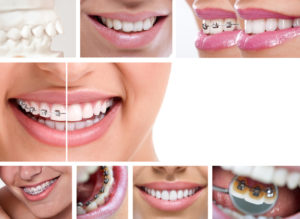
How Do They Compare?
In the past, there weren’t many options when it came to straightening your teeth. Many cultures simply tried cruel methods of pushing and forming the teeth until metal braces were created. Over several decades, metal braces were changed and adapted to how people lived. In modern times, people are ever busy and on-the-go. Aesthetics plays a huge role in how people view themselves and how others view them. This is why hidden orthodontics were created.
Lingual braces are a great way to straighten your teeth in secret. Your other options include:
- Traditional Metal Braces: These are almost the same as lingual braces, except they are made of silver metal alloys instead of gold ones. The brackets and wires go on the front of the teeth, where they are noticeable to others.
- Ceramic Braces: Similar to metal braces, this orthodontic appliance also rests on the front of your teeth. They are made of white, ceramic material, helping them to blend in more with the teeth. However, they are still somewhat noticeable.
- Invisalign Treatment: This orthodontic option involves no brackets and wires bonded to your teeth. You receive a set of transparent aligners custom-made for your teeth each week, that you wear for 20-22 hours of every day. However, although this option makes oral hygiene easier, they cannot help many bite and alignment issues. That is why patients opt for a discreet lingual option that can correct those issues.
Getting Your Lingual Braces
At Belmar Orthodontics, we know that getting braces is a big deal for teens, adults, and even children. Patients worry about their appearance often, which is why options such as Invisalign and lingual braces were invented in the first place. We are excited to be able to offer adults and teenagers an alternative to traditional metal braces with hidden lingual braces! If you want to know more about these braces or want to schedule your consultation, call Belmar Orthodontics today at (303) 225-9016!
Child Orthodontics Compared to Adult Orthodontics
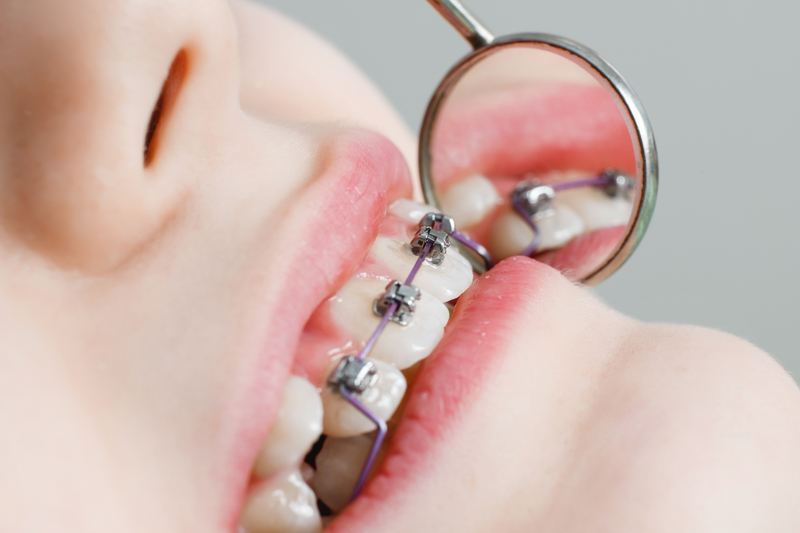
Did you know that about 1/4th of all people with braces are children? Millions of Americans receive orthodontic treatment for bite and alignment correction and for straightening the teeth. However, adults require treatment differently and for longer than a child would need, and child orthodontics have different goals for patients than adult orthodontics do. Both of these areas of orthodontics differ, but are also very similar in techniques used to create a beautiful smile.
Orthodontic Treatment
Orthodontic treatment is one of the easiest ways to help improve your health. Braces can help correct major oral health problems and can help avoid dental emergencies in the future. In children and adults, braces straighten the teeth so that they are aligned properly for speech, eating, biting and more. Straighter teeth are easier to clean and easier to manage, which leads to better health. Teeth must come in at specific places in the mouth for both children and adults. Child orthodontics focuses on that proper bite and tooth placement, and adult orthodontics seeks to improve the look of a smile.
Child Orthodontics
Did you know that children often wear braces, only to get them again as adolescents? Child orthodontics is a popular orthodontic option for at least 1/4th of braces wearers. Dentistry has been around enough centuries to know that the teeth, bite, alignment and growth happen in a specific way. Teeth must come in at the right spot and must be aligned in a specific manner in the jaw. As a child begins to get their baby teeth, some may be crooked. Depending on oral health conditions, and problems such as thumb-sucking, the shape of the teeth and bite can change.
Some children will have teeth that protrude outward, inward, or teeth that are in various directions. This leaves them open to the risk of broken or fractured teeth, tooth decay and problems with speech and development. Child orthodontics is the first phase of getting braces early. It focuses on getting the jaws lined up correctly and the teeth resting on each other in the right way. Once that happens, the baby teeth can fall out and the adult teeth can smoothly come into place. Child orthodontics will correct the major issues a child’s mouth has when they are around 7 or 8 years old. Starting at 11 and later, braces will seek to make the teeth look more attractive.
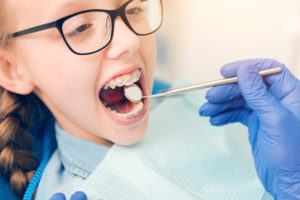
Adult Orthodontics
Most people think that teens make up the majority of patients with braces. However, adult orthodontics is very popular as well, with about 1/4th of all orthodontic patients being adults. There are more adults wearing orthodontic appliances than you realize, especially because of the “invisible options” they have that children don’t have.
Adults have a harder time with straightening their teeth than children do. By adulthood, the mouth and jaws have stopped growing, making them less moldable than a child’s jaws. The treatment that would have been easy for a child may take twice as long for an adult, or may require surgical orthodontics to achieve a straight smile, or proper bite and alignment. However, adults get the benefits of Invisalign treatment and lingual braces, which most children can’t have.
Invisalign is an “invisible” straightening option for adults and teens that uses a strong, clear aligner to straighten the teeth. Digital scanning creates customized aligners that a patient changes out ever 1-2 weeks, which slowly shift the teeth into their proper place. This invisible option allows adults and teens to brush, floss, eat and play sports without brackets and wires in the way. Lingual braces is another “invisible” straightening option. It has metal brackets and wires, except they’re placed on the back of the teeth. Only an adult can use these, as the baby teeth are not large enough for lingual braces to fit. Both adult orthodontics and child orthodontics correct bite, alignment and tooth issues, but the options available to the two age groups differ slightly.
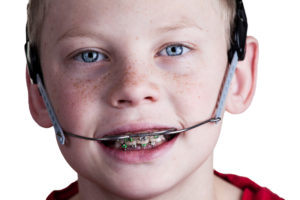
Why Choose Either Option?
When considering orthodontic treatment, there are various aspects you have to think about that include cost, health changes, aesthetic appeal and more. Many people think that braces are very expensive, when they are actually quite affordable. Your family may even save more money over time because of the oral health problems that are avoided by proper orthodontic treatment. A major reason so many people have orthodontic treatment is that they want to improve their smiles. Not only does a straight smile look beautiful, but it helps patients feel more confident. Studies show that child orthodontics helps children feel more confident in school and they do better academically.
Braces can correct speech problems caused by bite and alignment issues. They can straighten the teeth, making them easier to clean, and thus reducing problems with tooth decay, gum disease and bad breath. People socially perceive patients in a more positive way if their smiles are straighter and healthier. No matter if you choose orthodontic treatment for aesthetic appeal or for health reasons, the benefits are worth the time, effort and money you put into your treatment.
Conservative Treatment
Dr. Hardy practices a conservative approach to orthodontic treatment. While it is important for children to have an early orthodontic assessment to look for serious dental concerns (around age 7), the majority of children will not require orthodontic treatment before age 11. Your child might need child orthodontics or they may only need orthodontic treatment as a teen. Some people are naturally born with straight teeth that don’t pose them a problem, or their teeth start to shift later on in life. Whether your child needs child orthodontics or you need adult orthodontics, call Belmar Orthodontics today at (303) 225-9016 for your free consultation!
What Is Interceptive Orthodontics?
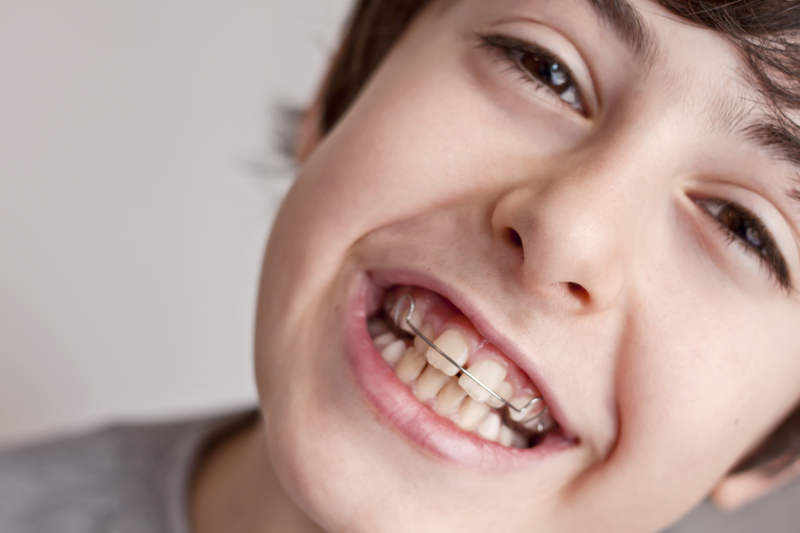
Millions of people each year receive interceptive orthodontics to correct bite and alignment issues. You may know these braces by the name of “child orthodontics” or “Phase 1” orthodontics. You might even know some children who have braces. Many children need orthodontic help to ensure that their bite lines up correctly for a healthy mouth. There are also other reasons a child might need interceptive orthodontics, such as receiving them to help make room in the mouth for the adult teeth to come in. Find out what interceptive orthodontics entail and if your child needs them!
Choosing to Get Braces
Many teens wear braces each year to straighten their teeth once the permanent, adult teeth have come in. Most permanent teeth have come into the mouth by age 12 or 13. However, braces aren’t only for teens who are wanting a straighter smile. In fact, about 1/4th of all people with braces are children and about the same amount are adults. Many more people than you would think wear braces, especially when “invisible” options like Invisalign and lingual braces exist.
When you choose to get braces, you are making a smart decision for yourself and for your oral health. Many people think that braces are only meant to help the teeth become straighter. Although that is one of the main reasons, there are many benefits of braces. These appliances are used to help fix crooked teeth, but also bites and mouth alignments that aren’t in proper position. There are orthodontic appliances when a patient only needs a few months to change a dental problem and there are even surgical options for orthodontics. But, why so many options when it comes to orthodontics?
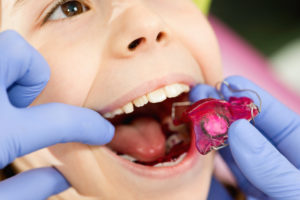
Benefits of Braces
We love to allow our patients the freedom to correct their smiles how they want, when they want. You are never too old to get braces. Children get them all the time to fix bite problems, only to get them again later on for straightening. Adults wear them, especially if they are wanting to advance their careers. Studies show that an employer is much more likely to take a potential employee if they have a straighter smile.
Orthodontic treatment is also proven to make people more confident in their smiles and in themselves. When patients get straighter teeth and fix dental issues, they smile more, talk more and exude more confidence. This can change someone’s entire life, especially a child’s.
What Are Interceptive Orthodontics?
Interceptive orthodontics is another name for “child orthodontics”. If you are surprised that children get braces, don’t be! The American Association of Orthodontics actually recommends that children have their first orthodontic visit between the ages of 7 and 8. This is when many of the baby teeth are falling out, and a perfect time to see how permanent, adult teeth are coming in. An orthodontist can use the first orthodontic appointment to check your child for bite and alignment problems before they become severe as a child ages into a teen and then an adult.
When certain orthodontic problems like crossbite or underbite, are left untreated, these conditions can become more severe, complicating issues. Interceptive orthodontics aims to check children while they are young for problems that will become severe in the future. They “intercept” a patient before that point, and fix the problem much easier than if a child’s mouth had grown more. Interceptive orthodontics checks children at an early age to:
- Observe the progress of incoming teeth
- Monitor facial and jaw development
- Guide incoming teeth into their ideal position
- Detect hidden dental issues
- Reduce the risk of impacted teeth
- Decrease the risk for permanent tooth extractions
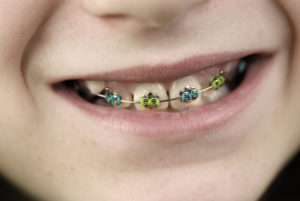
Considering Interceptive Orthodontics?
Do you want to give your child the best chance possible to have a healthy mouth? Make sure you involve an orthodontist in their early-childhood development! Interceptive orthodontics is not needed for every child, but for the ones who need it, it can change their life. If a child has enough crooked teeth, it can create uneven pressure on those teeth when they bite and chew. This can lead to broken, fractured, chipped and cracked teeth. The teeth are also much harder to clean when they are crooked, leading to tooth decay and gum problems in young children.
If a child’s bite is not even or their alignment is off, it can also lead to broken teeth. When the baby teeth aren’t aligned correctly, the adult teeth won’t come in right. Children can have uneven bites form from thumb-sucking and similar habits that curve the teeth outward. This can create problems biting, chewing, talking, and more. Speech impediments can form and become worse over time if the problem isn’t corrected. No parent wants speech problems, tooth decay or dental injuries to happen to their child, and they never have to. Call Belmar Orthodontics today at (303) 225-9016 for your child’s comprehensive orthodontic exam and see if they need interceptive orthodontics today!
Dental Emergencies with Braces
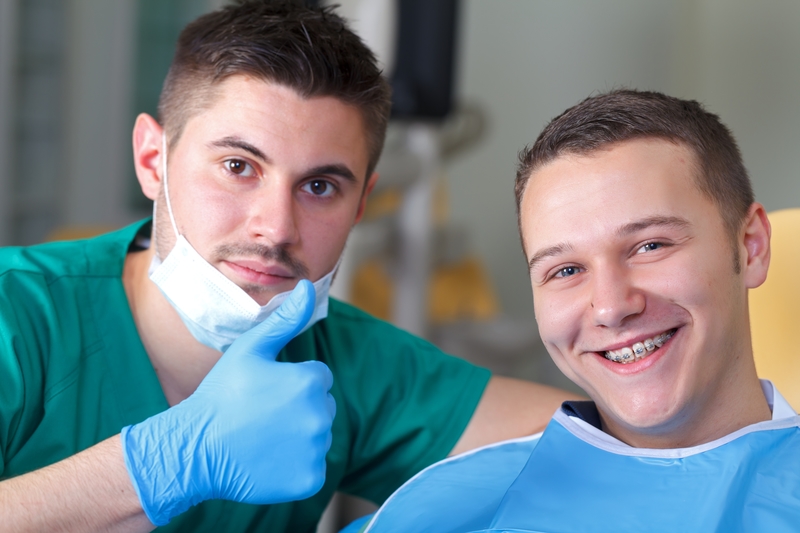
Getting braces on your teeth is an exciting time of life, as you are working towards a straighter, more beautiful smile. However, with hard work, there are often roadblocks along the way. Many patients find themselves with orthodontic or dental emergencies during their time with braces. Bands and brackets can become loose, wires can get pokey and problems with cavities or gum disease can happen. Find out what to do when orthodontic or dental emergencies like these strike and how to prevent them from happening in the first place!
What Dental Emergencies Are Common?
There are countless dental emergencies each year. Millions of people have them, and most don’t know what to do when they happen. Studies show that many people actually go to the emergency room for their dental emergencies instead of a dentist. However, those patients often get sent to their dentist or orthodontist anyways because they are the professionals that help with dental emergencies. If you ever have a dental emergency, call your dental or orthodontic office immediately to know what to do. If the problem is severe enough (such as a broken jaw), then go to the emergency room.
Dental emergencies that are common in patients include:
- Severe toothaches
- Cut or injury to the cheek, lip, tongue or gums
- A broken tooth
- A cracked tooth or tooth fracture
- Knocked-out permanent tooth
- Bleeding that doesn’t stop after a tooth falls out
If any of these dental emergencies happen to you, you want to promptly seek dental help. Some dental emergencies will have to be fixed by a dentist, while others will need the attention of an orthodontist. Luckily, orthodontic emergencies aren’t as severe as dental emergencies in most cases.
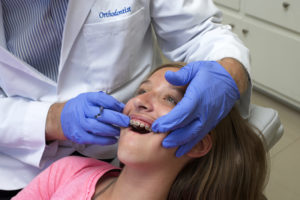
Dental Emergencies with Braces
You have to discern between dental emergencies and orthodontic emergencies. Problems with broken teeth are generally ones that a dentist will have to deal with. However, if you wear braces, then you will want to call both your dentist and your orthodontist. Some problems may need to be fixed without the bracket or wires on the teeth. For example, if a patient is having severe pain from a toothache, the problem could be tooth decay inside the tooth. A dentist can definitely fix the decay and fill the cavity, but the braces archwire or bracket might be in the way. In this situation, your orthodontist can take off your archwire—and even the bracket in certain instances—to fix the cavity.
If you break, crack, or fracture a tooth, you will need the orthodontist to remove your orthodontic appliance pieces in the area to receive your crown or dental implant. This is not something that happens often unless there is severe decay in a tooth that was fixed before braces. Most patients have a dental appointment before they get braces on their teeth to ensure there is no internal decay that will cause dental emergencies in the near future.
Types of Orthodontic Emergencies
Some orthodontic emergencies that can happen during your 18-24 months include:
- Tooth Tenderness: The first 2-4 days with braces can leave you with tender teeth. Use over-the-counter pain relievers to help with this pain and warm saltwater rinses, if needed. At every braces adjustment, you may notice soreness for the first 2-4 days that will fade. However, if your tooth tenderness doesn’t go away, seek orthodontic help, especially if the soreness turns into severe pain.
- Lip and Cheek Sores: Your mouth will have to adjust to braces. You will notice your braces a lot at first, but over time, the feel of them will become normal. The first few weeks is a common time for patients to get lip and cheek sores from brackets and wires. If you notice sores starting to form, use your orthodontic wax and place it on the area of your bracket or wire that is causing irritation. If that irritation persists, call us to adjust the orthodontic appliance.
- Pokey Wires: Wires can come loose from sticky foods or from picking at your braces. When a wire protrudes, it can cut your gums and the insides of your cheeks, causing them to bleed. At home, try using a Q-tip or clean pencil eraser to push the wire in towards the teeth. This should stop the problem, but also call our office to have the wire adjusted or cut so it doesn’t cut up the inside of your mouth.
- Loose Bands/Brackets: Brackets and bands can break, especially if you’re eating hard or sticky foods that are prohibited. In general, a broken bracket is not a dental emergency. However, if it causes you significant discomfort, call our office to have it fixed right away. This is especially true if the bracket or band hangs down or interferes with eating.
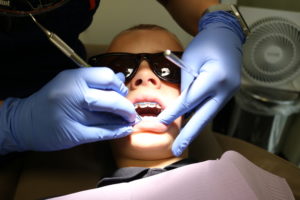
Seeking Help Promptly
Dental emergencies and orthodontic emergencies are never fun. However, there is a big difference between the two. Dental emergencies generally affect your overall oral health and can cause you to actually lose teeth if you don’t seek help. Anytime there is a broken, cracked, fractured, or knocked-out tooth, you want to seek prompt medical help. If you don’t, a dental implant might be your only option for restoring your smile.
Luckily, orthodontic emergencies aren’t quite as serious as dental emergencies. They can cause problems (even sores and cuts) with your teeth and gums, but you generally won’t lose a tooth in those situations. Your time with braces should be a pleasant, comfortable one. If your braces bother you or are painful, always let us know. For questions about orthodontic and dental emergencies, call Belmar Orthodontics today at (303) 225-9016!
Orthodontic Treatment Before the Year 2000
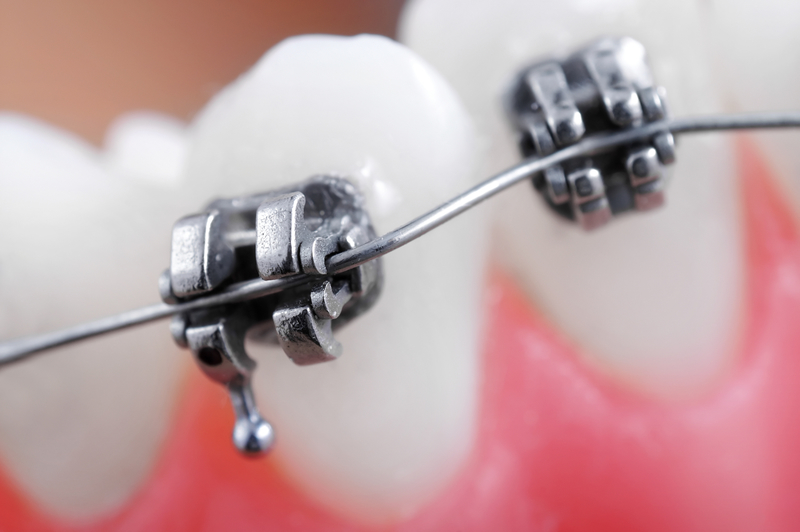
It’s the year 2018 and a lot has changed in every field of medicine since the year 2000. Orthodontics is no exception, and there are always new advances in how your teeth are straightened and cared for. There are many braces options available to patients that were not available in years past. However, some services—such as Invisalign—have been around longer than you might think. Find out when different orthodontic practices and services were available to patients and how orthodontic treatment looked before the year 2000.
How Old Is Orthodontic Treatment?
Many people think that orthodontic treatment is fairly new. However, people have been straightening their teeth for many centuries. Their methods were simply much cruder than the braces and orthodontic appliances you know today. Many mummies from Ancient Egypt have been found wearing orthodontic appliances to straighten their teeth. Ancient Greeks, Romans and the Etruscans have also been found with various types of “braces” and other mouth appliances.
To give you an idea of how long orthodontic treatment has been around, writings by Hippocrates (a Greek physician) have been found about the subject from 400 b.c. Even back then people were concerned about crooked teeth and how they looked. However, there weren’t very good methods for straightening the teeth, so there weren’t many advances in orthodontics until just a few centuries and decades ago.

Past Orthodontic Methods
People centuries ago did not have the best methods for straightening teeth. However, over the centuries, many people made advances or tried various methods such as the following:
- Ancient Egyptians used metal parts and wires to try to straighten the teeth, as has been seen on mummies.
- Celsus, a Roman writer from around 1 A.D., wrote about trying to straighten your teeth by pushing them into place.
- Several years later, a Roman named Pliny recommended filing your teeth down if you wanted them a certain size.
- Pierre Fauchard was born in 1728, and through his various methods and research in straightening teeth, is now considered the “Father of Dentistry”. One of the methods he tried on patients was forcefully pulling and moving the teeth into place with forceps. He would then tie those moved teeth to others so they could heal back into the mouth again.
- Dental impressions began in the 17th century by Matthaeus Gottfried Purmann. Impressions make models of the teeth, and this method was so successful that impressions are still used today.
- In the United States, barbers and medical doctors often pulled infected teeth and performed orthodontic treatment. The treatment varied from person to person and generally involved pulling teeth without numbing medicine.
- J.S. Gunnell invented a form of headgear in 1822 that was successful in straightening the teeth. However, that headgear was large and fastened to the jaw outside the mouth and pushed on the teeth.
- Before 1970, professionals in orthodontics wrapped wires around each tooth, anchoring them with a bracket on each tooth. This method required a lot of metal in the mouth.

Modern Braces and Appliances
Modern orthodontic treatment is very straightforward and easy. Orthodontics has advanced so much that people can even straighten their teeth without any visible signs that they are doing so. When you think of braces, you probably think of the metal brackets and wires that so many wear. Traditional metal braces consist of a metal bracket attached to each tooth with a metal wire going through the bracket. This orthodontic treatment method mimics past metal treatments that were done throughout the centuries. However, the brackets and wires take up minimal space in the mouth and gently straighten the teeth.
Ceramic braces are another modern option for patients that are most similar to metal braces. They involve the same look and design, except they are made from white, ceramic material. Even the archwire can be made white for a patient. Lingual braces also use a metal bracket and wire design, except that they are attached to the back of a patient’s teeth. These were created in 1976 and provided patients with a way to straighten their teeth without visible brackets on their teeth.
Invisalign is the most incognito way to straighten your teeth. Created in 1997, this orthodontic treatment consists of transparent aligners that are switched out each week. A patient will wear the aligners 20-22 hours a day with the freedom to remove them for eating, drinking, sports, playing instruments and more. In about the same time as traditional metal braces (sometimes less), patients can get straight teeth. This is an amazing option, as any teen or adult can straighten their teeth without others knowing.
Orthodontic Treatment Today
Many advances in dentistry happened around 1970 and later. This is when the design of metal braces was perfected to what we know it to be now. The future will surely hold many more advances in orthodontic treatment as the years go by. No matter what type of appliance is available or what you choose to have, we recommend straightening your teeth. Not only can it significantly reduce your risk for tooth decay and gum disease, but straighter teeth can raise your confidence and help you be more successful. To have your free braces consultation, call Belmar Orthodontics today at (303) 225-9016!
What To Do About Your Wisdom Teeth
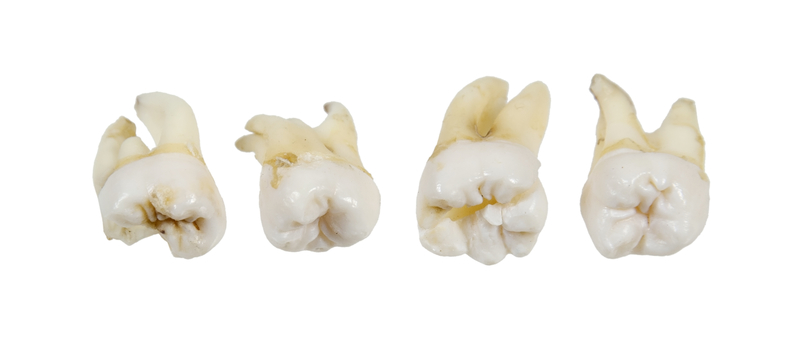
The wisdom teeth are back molars that, on average, come in between the ages of 17 and 21. Wisdom teeth can put pressure on the rest of your teeth and make them crooked if something isn’t done about them. You don’t want wisdom teeth to undo all the hard work you spent getting your teeth straight. Find out how wisdom teeth affect your oral health and what to do about them if you are planning on getting braces or if you just got them off!
Your Permanent Teeth
Every person gets two sets of teeth during their lifetime: the baby teeth and the permanent teeth. If you are reading this, then you have already likely lost all your baby teeth. That means you are left with your permanent, adult teeth, which you will have for the rest of your life. Well, at least most of them. The majority of Americans get their wisdom teeth removed to help keep their mouth healthier. You have several sets of large teeth in your mouth, which are called the molars. These are the bigger teeth towards the back of your mouth that help you chew up food.
Most people have all of their permanent teeth by their early teen years. However, there are up to 4 teeth that come into the mouth later on, usually between the ages of 17 and 21. These are the wisdom teeth, and no they are not teeth that provide you with your wisdom. These are a third set of molars that come in as you transition from a young adult to an adult. As a people, we don’t really use these third molars, but our ancestors in centuries past may have had much more use for them when it came to chewing meat.
However, one of the reasons they are called the “wisdom teeth” is because this transitioning stage from young adulthood to adulthood. This is generally a time when people rapidly mature and make many life changes, which helps increase their wisdom. Hence, the “wisdom teeth”.
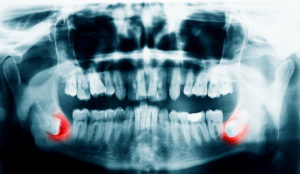
What to Do About the Wisdom Teeth?
As mentioned, we don’t really use these third molars in our day. In fact, the wisdom teeth can actually cause your smile more harm than good. They come into your mouth at an angle, which can put pressure on your closest molars. The wisdom teeth can push those molars, causing all the teeth to start pushing into each other. This creates a crooked smile. The pressure and angles of these wisdom teeth coming in can weaken the second molars or crack them. When the wisdom teeth start coming into the mouth at an angle, they are called “impacted teeth”.
Generally, the wisdom teeth crowding or damaging your teeth isn’t painful. However, if you develop tooth decay because of the wisdom teeth, and it gets severe, then you will feel pain. Some patients will have the wisdom teeth sit right underneath a layer of gum tissue. That this layer can collect bacteria and food particles, which can actually lead to an infection in your mouth, which you don’t want. Other patients also have bone or other teeth blocking the wisdom teeth, so they will never come in very well and will really damage your smile. Hence, the reason why they are so often taken out. You don’t really need them and they generally cause mostly problems instead of benefits.
What Is Surgical Orthodontics?
Many people are born with 4 wisdom teeth. However, depending on genetics, some people may only have 1, 2 or 3 wisdom teeth or even none at all. It all depends on the genetics you have. Some will have them only in their top jaw or only in the bottom jaw. However, there are so many problems with these teeth that we recommend that they be removed before your smile is affected. Surgical orthodontics and surgical dental procedures can remove the wisdom teeth.
These procedures will either use topical anesthetics or will put a patient completely under to remove the wisdom teeth. We take full x-rays of both the top and lower jaw of your teeth so you can see the angle and trajectory of your incoming wisdom teeth and how they will affect your oral health. Generally, the gums are cut right above where the wisdom teeth lie. Then, they are removed with dental tools and the gum flaps are put back in place and closed up. In just a few weeks, you will feel good as new and you won’t have problems with your wisdom teeth. For such a simple procedure, it’s worth it to protect your smile and to keep it straight.
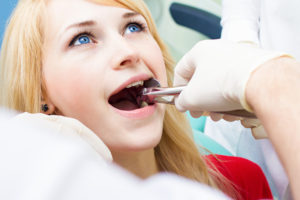
Keeping Your Smile Healthy
Just like any other part of your body, it may take many steps and actions to keep those parts healthy. Your smile is something that takes work to maintain, but luckily it’s not hard work. All you have to do is brush your teeth at least twice a day as recommended by the American Dental Association. They also recommend flossing at least once (if not more), using mouthwash and fluoride products, and seeing your dental professional often.
These things don’t take much time and effort, but those small actions can save your smile and keep it healthy and straight throughout life. If you need tips for keeping your mouth healthy or you want to know more about what you should do with your wisdom teeth removal, call Belmar Orthodontics today at (303) 225-9016!
How We Plan Out Your Orthodontic Treatment

Even though most patients have braces for about 18-24 months, every patient’s care is different. Orthodontic treatment for one patient may be extensive, while another patient will have a very short and simple experience with braces. Find out how Dr. Hardy plans out your orthodontic treatment and how that treatment will look with different braces appliances.
Do You Need Braces?
Countless millions of people will require orthodontic treatment in order to fix bite and alignment problems. They also get braces to fix crooked teeth and to reduce problems with tooth decay and gum disease. Over 4 million Americans a year receive orthodontic treatment via braces. Many of those people are teens, but about 1/4th are children and about 1/4th are adults. Studies show that many people see braces as a luxury and even go without many needs and wants in order to have them. This is not only for aesthetic appeal, but also for health reasons.
Countless studies prove that orthodontic treatment can help make a person more confident. When your smile is beautiful, you will smile more. Smiling will help you feel happier and more confident, and you will actually start to appear that way to others. Studies also show that people with straighter smiles as viewed as healthier, wealthier, more attractive, and more trustworthy. If all of those qualities appeal to you, consider receiving orthodontic treatment. If you have oral health problems as well, you may actually need braces to help those problems stop.
Orthodontic Treatment for Children
We perform child orthodontics for many patients. Development in children is vitally important in the younger years before age 10. Children lose their baby teeth around ages 7 and 8. They immediately start to have their permanent, adult teeth come into the mouth. This is a time when we can examine a child’s bite and alignment to make sure the adult teeth will come in correctly.
Some children don’t have enough room in their mouth to have their adult teeth grow in or they grow in crooked. This can lead to significant problems with speech impediments. If the teeth are crooked, this can place uneven pressure all over the mouth, leading to broken, cracked and chipped permanent teeth. Crooked teeth also lead to pockets of plaque that toothbrushes and floss can’t get to. This leads to decay problems. Straightening the teeth with orthodontic treatment can not only fix bite and alignment issues, but can straighten the teeth in childhood, so they come in correctly as a child grows.
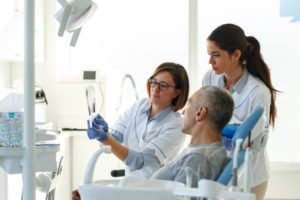
Orthodontic Treatment for Teens and Adults
For children, we take x-rays of their teeth to detect bite and alignment issues. We show our patients problem areas in their x-rays and suggest orthodontic appliances to best realign the bite and alignment of the jaws. For children, teens and adults, the teeth will be straightened to avoid serious dental problems. We offer 3 types of either metal or ceramic options to patients for their orthodontic treatment including metal braces, lingual braces and ceramic braces. All consist of a bracket-and-wire design, but all are different.
Depending on your preferences, you can choose to have either metal or ceramic brackets and wires on your upper and lower teeth. Or, you can choose to have metal lingual braces, which are metal braces placed on the backs of your teeth. Once you choose your orthodontic appliance, we take impression molds of your teeth. Those molds will harden and we will use them to plan out a trajectory of your orthodontic care. Based off of how crooked the teeth are and what appliance you choose, we will break down your orthodontic treatment into a series of months and will see you every 4-6 weeks to tighten wires on your teeth in order to move the teeth during that timeline. When you get your braces, you will also get all the information you need about your chosen braces appliance and what timeline you can expect for your straightening.
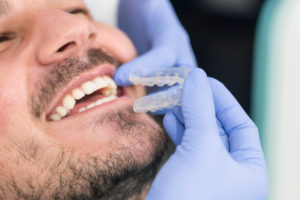
Invisalign Treatment
In decades past, traditional metal braces were the only option given to patients. In modern times, many teens and adults are opting for more and more discreet straightening options. The most invisible method for receiving orthodontic treatment is through Invisalign transparent aligners.
Invisalign is a fairly modern orthodontic treatment where the teeth are straightened with transparent aligners instead of the traditional metal wires and brackets. Invisalign teen and Invisalign for adults are both comprised of custom-made aligners that a patient changes every week. We digitally design Invisalign aligners based off of digital impressions of a patient’s teeth. Using this initial impression, we can digitally map out a patient’s orthodontic treatment. This is beneficial to teens and adults alike. They can visually see how their teeth will change over the months and how the end result will be. Plus, no goopy putty required!
The hard Invisalign aligners efficiently place pressure on the teeth and slowly move them into place over time. Instead of tightening brackets and wires at orthodontic appointments, patients receive new aligners and have their teeth examined to see if they are on course with their treatment. This treatment option lasts about as long as traditional metal braces, but can be shorter for many patients.
Choosing Orthodontics That Are Right for You
If you are considering getting orthodontic treatment, don’t wait! A straighter smile has incredible benefits for children, teens and adults alike. Straighter smiles bring more confidence to people, and others will see that confidence. To learn about what orthodontic treatment option is right for you and to get started on your customized plan, call Belmar Orthodontics today at (303) 225-9016!

